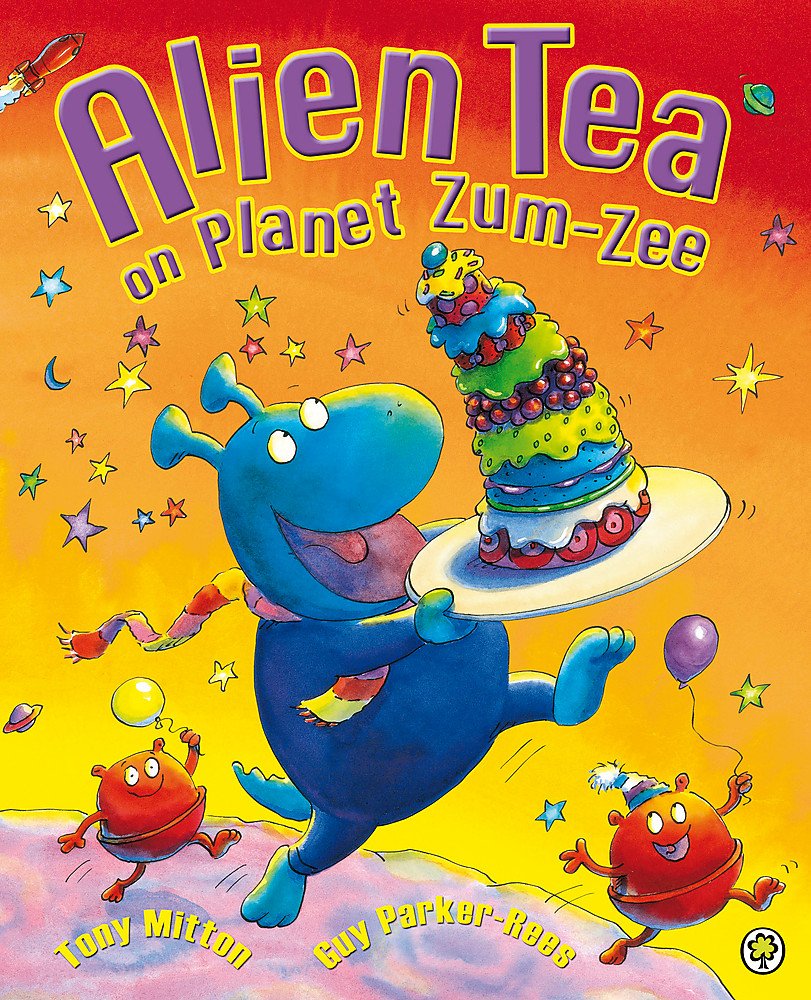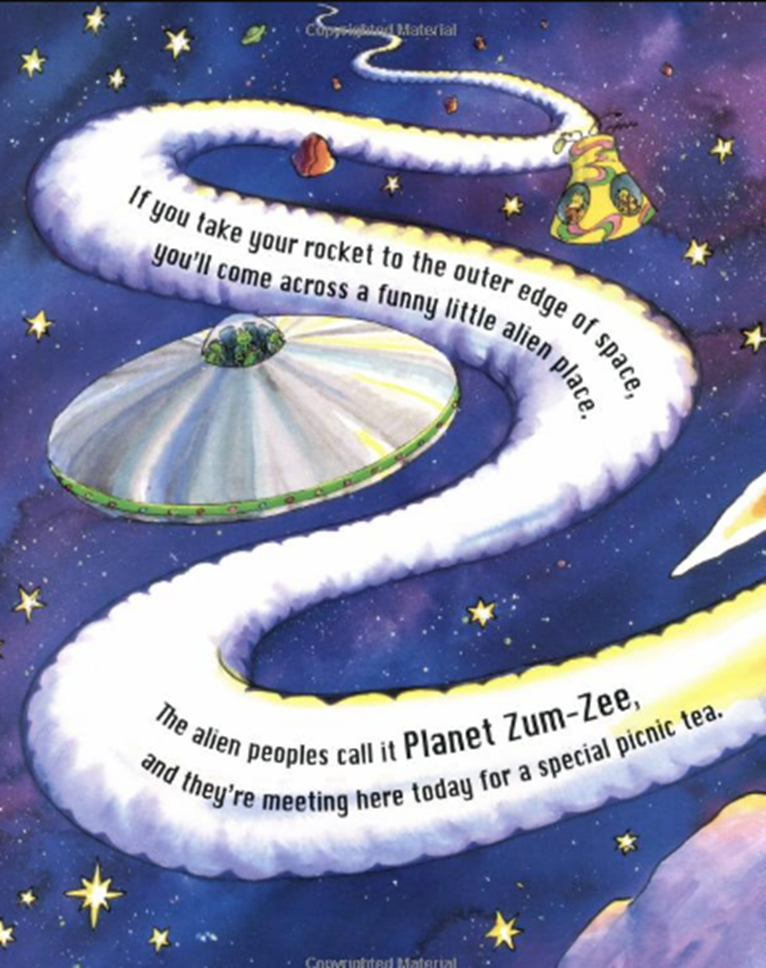This month's Book Nook topic is...
Building Phonological Awareness with
Alien Tea

Sound awareness, also known as “phonological awareness”, means understanding that words can be broken down into smaller parts like syllables and individual sounds. Having an awareness of these sounds prepares children for connecting the letters they see on a page with the sounds they represent, which is critical for making sense of print.
Rhyming books are great tools for promoting sound awareness. In fact, one of the first signs that a child is developing sound awareness is when they start to recognize rhymes in books or songs. At The Hanen Centre, we use a strategy called “Listen… and Find One Like It” to help children pay attention or “tune in” to words that start (alliteration) or end (rhyme) with the same sound.
Let’s look at some ways you can apply this strategy with a fun rhyming book.
The Book:
Alien Tea on Planet Zum-Zee by Tony Mitton and Guy Parker-Rees
Why We Chose This Book
Alien Tea on Planet Zum-Zee is a fun book about young aliens who have brought food from their home planets to a tea party. The aliens reject a jelly-like dish, only to discover it is really quite delicious once they give it a try! The book is beautifully illustrated with large pictures and offers many opportunities to bring children’s awareness to words that rhyme.
Listen… and Find One Like It
This strategy works exactly how it sounds:
Step 1 – Listen
When you are reading this book, you can start by putting an emphasis, or stress, on the words that rhyme. This will encourage the child to listen not just for the meaning of the words, but also to start to pay attention to how the words sound. Once you’ve stressed the words that rhyme you could say: “Listen, ‘cake’ sounds like ‘shake’. ‘Cake’ and ‘shake’ rhyme. Let’s say the words together. Cake. Shake. Do you hear how they sound the same at the end of the word? Cake. Shake.”
Step 2 – Find One Like It
Now it’s time to encourage the child to find another rhyming word. You could say: “Let’s think of another word that sounds like ‘cake’ and ‘shake’. How about ‘make’? ‘Make’ sounds like ‘cake’ and ‘shake’. ‘Make,’ ‘cake’ and ‘shake’ all rhyme. They all sound the same at the end.”
At the beginning, you will be the one coming up with the “Find One Like It” examples. Many young children won’t yet be able to produce a rhyme, and that’s fine! Exposing them to the idea of rhyming words will build their sound awareness. With practice, the child will soon be able to produce their own suggestions.”
The First Time You Read the Book
During the first reading, it’s important that you don’t interrupt the story too much. This is a time when the child is just getting familiar with the book. One thing you can do however, is emphasize the rhyming words as you say them.
For example, in the lines:
He huffs and he hurries.
He can see that he’s late.
Here he comes puffing,
With a big, round plate.
You can say late and plate a little bit slower and a little bit louder than the other words in the text, to make them stand out.

Later Readings
Once you have read the story through with the child, you can start to pause and use the “Listen… and Find One Like It” strategy throughout the book. For example, you could say, “Listen, ’space’ sounds like ‘place’. ‘Space’ and ‘place’ rhyme. Let’s say the words together. Space. Place. Do you hear how they sound the same at the end of the word? Space. Place.”
Then you can get the child thinking about other rhyming words by suggesting a word that rhymes with ‘space’. You could say, “Now let’s think about another word that rhymes with ‘space’ and ‘place’. Hmm. How about ‘face’? ‘Face’ sounds like ‘space’ and ‘place’, doesn’t it? ‘Space,’ ‘place,’ and ‘face’ all rhyme. They all sound the same at the end of the word.”
Offer many “Find One Like It” examples before asking the child to come up with one on their own. This strategy can be a lot of fun and can get silly quite quickly as children may make up nonsense words when they can’t think of a real rhyming word!
Over time, you can extend the “Listen and Find One Like It” strategy to other books, songs and activities.
Happy rhyming and reading!
More Resources
The strategies in this Book Nook post are drawn from Hanen’s practical, research-based guidebooks for building emergent literacy. Explore the links below to learn more about how these guidebooks can support you.
For Parents I'm Ready! guidebook
I'm Ready! guidebook
For Educators ABC and Beyond guidebook
ABC and Beyond guidebook
